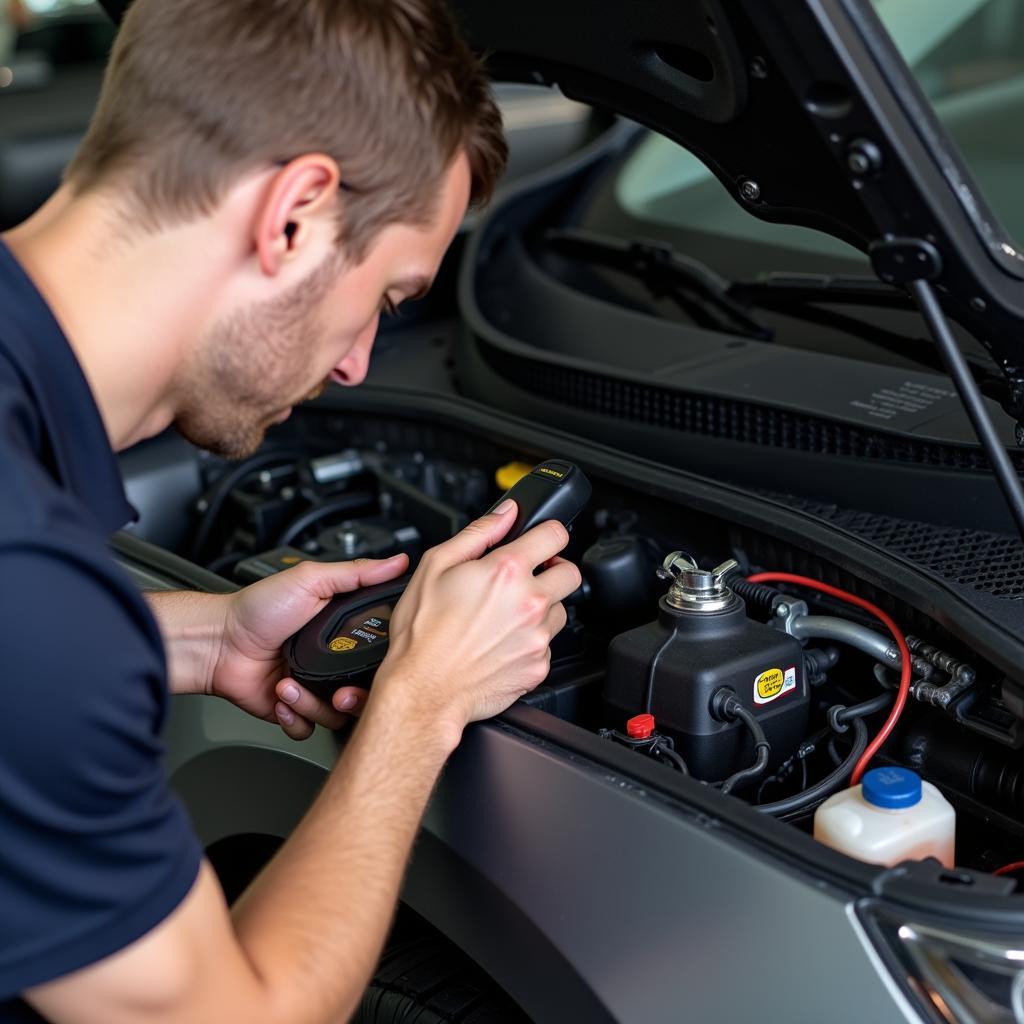Car throttle mechanical problems can be a real headache, leaving you stranded or facing costly repairs. Understanding the intricacies of your vehicle’s throttle system and how to troubleshoot mechanical issues can save you time and money. This guide provides a deep dive into the common mechanical problems associated with car throttles, offering solutions and preventative measures for both car owners and professional mechanics.
Understanding Your Car’s Throttle System
Before we delve into troubleshooting, it’s crucial to understand how your car’s throttle works. In older vehicles, a cable physically connects the gas pedal to the throttle plate in the carburetor or throttle body. When you press the gas pedal, the cable opens the throttle plate, allowing more air into the engine and increasing speed. Modern vehicles often use electronic throttle control (ETC) systems, also known as “drive-by-wire.” These systems replace the physical cable with electronic sensors and actuators. When you press the gas pedal, a sensor sends a signal to the engine control unit (ECU), which then controls an electric motor that opens the throttle plate.
Common Car Throttle Mechanical Problems (Cable Operated Systems)
Sticking Throttle Cable
A sticking throttle cable can be caused by dirt, debris, or corrosion. This can lead to a hesitant or unresponsive throttle, or even a stuck-open throttle, which is a dangerous situation.
- Solution: Lubricate the throttle cable with a suitable lubricant. If the cable is frayed or damaged, replacement is necessary.
Loose or Broken Throttle Cable Return Spring
The throttle return spring ensures that the throttle plate closes when you release the gas pedal. A loose or broken spring can cause the throttle to stick open or return slowly.
- Solution: Inspect the return spring for damage or looseness. Replace the spring if necessary.
Worn Throttle Linkage
Over time, the throttle linkage components can wear out, causing play or slop in the system. This can lead to a vague throttle response and difficulty in maintaining a consistent speed.
- Solution: Inspect the linkage for wear and tear. Replace any worn or damaged components.
Common Car Throttle Mechanical Problems (Electronic Throttle Control Systems)
Failed Throttle Position Sensor (TPS)
The TPS sends a signal to the ECU indicating the position of the throttle plate. A faulty TPS can cause a variety of problems, such as rough idling, poor acceleration, and check engine light illumination.
- Solution: Testing the TPS with a multimeter can confirm if it is malfunctioning. Replacement is typically the solution for a failed TPS.
Faulty Throttle Actuator Control Motor
The throttle actuator control motor is responsible for opening and closing the throttle plate in ETC systems. A failing motor can lead to a unresponsive throttle or an inability to control engine speed.
- Solution: Diagnosis typically involves checking for error codes with a diagnostic scanner. A faulty actuator motor requires replacement.
 Electronic Throttle Control System Components
Electronic Throttle Control System Components
Wiring Issues
Damaged or corroded wiring within the ETC system can disrupt communication between the various components.
- Solution: Thoroughly inspect the wiring harness for any signs of damage or corrosion. Repair or replace any faulty wiring.
Preventative Maintenance for Your Car’s Throttle
Regular maintenance can prevent many throttle problems. Here are some key steps:
- Regularly inspect and lubricate the throttle cable (for cable-operated systems).
- Check the throttle linkage for wear and tear.
- Have the TPS and throttle actuator control motor checked during routine maintenance (for ETC systems).
- Keep the engine compartment clean and free of debris.
“Regular maintenance is key to avoiding throttle issues. Just like any moving part, the throttle system needs attention to ensure smooth and reliable operation.” – John Smith, Automotive Engineer, ASE Certified Master Technician
Troubleshooting Tips
When experiencing throttle problems, it’s helpful to systematically investigate potential causes. Here are some tips:
- Check for any obvious signs of damage or wear to the throttle cable, linkage, or electronic components.
- Listen for unusual noises, such as clicking or grinding, coming from the throttle area.
- Use a diagnostic scanner to check for error codes related to the throttle system.
 Mechanic Diagnosing Car Throttle Problem
Mechanic Diagnosing Car Throttle Problem
“Don’t underestimate the importance of a thorough inspection. Often, a simple visual check can reveal the source of the problem.” – Maria Garcia, Certified Automotive Technician
Conclusion
Car throttle mechanical problems can range from minor annoyances to serious safety concerns. Understanding the different types of throttle systems, common problems, and preventative measures can empower you to address these issues effectively. By following the guidance in this article, you can keep your car running smoothly and safely. If you are experiencing persistent throttle problems, don’t hesitate to contact AutoTipPro at +1 (641) 206-8880 or visit our office at 500 N St Mary’s St, San Antonio, TX 78205, United States for professional assistance.
FAQ
-
What are the signs of a bad throttle position sensor? Symptoms can include rough idling, hesitation during acceleration, poor fuel economy, and a check engine light.
-
Can I clean my throttle body myself? Yes, with the proper cleaning agent and precautions, you can clean your throttle body.
-
How much does it cost to replace a throttle cable? The cost varies depending on the make and model of your vehicle, but it is typically a relatively inexpensive repair.
-
What is the difference between a carburetor and a throttle body? A carburetor mixes air and fuel, while a throttle body controls the amount of air entering the engine. Modern vehicles primarily use throttle bodies.
-
How often should I lubricate my throttle cable? It’s generally recommended to lubricate the throttle cable every other oil change.
-
What are the symptoms of a sticking throttle? The car may accelerate unintentionally, or the engine may rev high even when the gas pedal is released.
-
Is it safe to drive with car throttle mechanical problems? No, it is not safe. Throttle problems can cause loss of control of your vehicle and should be addressed immediately.






Leave a Reply